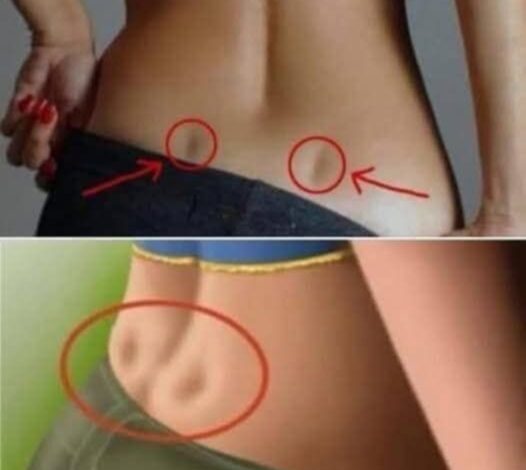The Truth About Back Dimples: What Your Bodys Natural Features Really Mean

Understanding Venus Dimples and Lower Back Anatomy
Back dimples, scientifically known as “dimples of Venus” or “sacral dimples,” are natural body features that appear as small indentations on either side of the lower spine. These distinctive markings result from the skin’s natural attachment to the underlying pelvic bone structure, specifically where soft tissue connects to the iliac bone.
The Science Behind These Natural Body Markings
These symmetrical indentations are primarily determined by your genetic makeup and skeletal anatomy rather than fitness level or body composition. The visibility of back dimples depends largely on individual bone structure and how the skin naturally adheres to the underlying framework of your lower back region.
Common Myths About Fitness and Health Benefits
Many fitness enthusiasts and health-conscious individuals believe these dimples indicate superior physical conditioning or enhanced circulation in the lower back area. Some popular claims suggest that people with visible back dimples naturally possess:
- Enhanced flexibility and mobility
- Improved blood circulation in the lumbar region
- Greater core strength and stability
- Better overall physical performance capabilities
However, medical research and anatomical studies have not established concrete evidence supporting these widespread beliefs. While these notions persist in fitness communities and wellness circles, they remain largely unsubstantiated by scientific data.
Aesthetic Appeal and Body Symmetry
From an aesthetic standpoint, back dimples are frequently considered attractive physical features that enhance the natural contours of the human form. Many people view them as indicators of pleasing body proportions and symmetrical development, contributing to overall physical appeal and confidence.
Debunking Weight Loss and Metabolism Myths
Another persistent misconception suggests that individuals with back dimples have natural advantages in maintaining lower body fat percentages in the lumbar region. While these features may appear more pronounced in people with leaner physiques, their presence doesn’t indicate any special metabolic benefits or fat-burning capabilities.
The Reality: Genetics Determine Everything
Your genetic inheritance exclusively determines whether you develop these natural markings. The presence or absence of back dimples has no correlation with:
- Overall health status or medical condition
- Physical fitness levels or athletic ability
- Metabolic rate or weight management success
- Flexibility, strength, or endurance capabilities
What This Means for Your Health Journey
Whether you have these distinctive features or not, your individual health profile remains unchanged. Those without back dimples shouldn’t feel concerned about their physical condition, as skeletal variations are completely normal among different body types.
Similarly, having visible dimples simply represents a unique anatomical characteristic rather than a special health advantage or superior physical conditioning.
Professional Health Guidance
Understanding your body’s natural features can contribute to better self-awareness and confidence in your wellness journey. However, individual anatomical variations should never be used as sole indicators of health status or fitness potential.
For personalized advice about your physical condition, body composition goals, or any concerns regarding your anatomical features, consulting qualified healthcare professionals, certified fitness trainers, or medical specialists remains the most reliable approach to understanding your unique health profile.